
|
Welcome to Duncan White's Pseudo-Mondrian Page. I have written 3
CGI scripts in Perl which generate images very like those of the
famous abstract artist Piet Mondrian. You're welcome to use and
play around with these programs as much as you like.
|
Create your own Pseudo-Mondrian Abstract Art
Piet Mondrian was a famous abstract artist, living from 1872-1944. After a distinguised career as a accomplished conventional painter, from about 1912 until his death in 1944, he became interested in abstract space, structure and form, and developed a totally original abstract style based on a single theme, which we might describe roughly as follows:
Take a blank white canvas.
Place a series of irregularly spaced horizontal and vertical lines
(of varying thickness)
on the canvas, effectively dividing the space into a collection of
irregular rectangular regions.
Leave most of these regions plain white, but colour in a few of them,
usually in bold primary colours
(Mondrian particularly liked yellow, blue and red).
Sometimes, leave out part of a line.
I should point out that Mondrian did not stick rigidly to the above description - he experimented continually with different variations on the theme, producing a wide range of abstract artwork. But all are instantly recognisable as being a Mondrian image.
Here are two examples of Mondrian's work, from Mark Harden's ArtArchive:
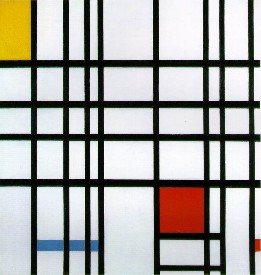
|
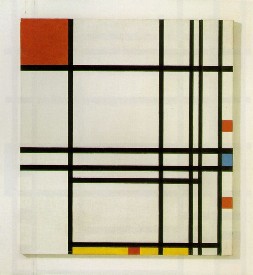
|
There are many excellent web guides to, and museum exhibitions of, Mondrian's work. Here are two:
In my opinion, Mondrian's abstract compositions are beautifully simple and understated, totally abstract, and happen to be relatively easy to simulate via computer :-)
As I explored ways of generating pseudo-Mondrian images, I wrote 3 versions of this program, placing lines and coloured rectangles in different ways. Here's a single example from all 3 versions. Simply click on any image to run that version of the program:
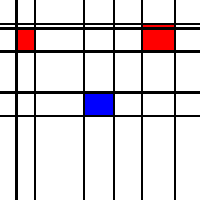
|
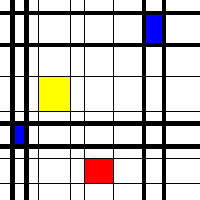
|
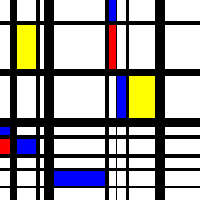
|
You can download all 3 Mondrian CGI scripts and their support modules here.
D.White@ic.ac.uk Updated: September 2000
